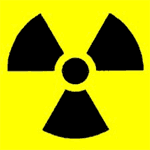|
 Radon is a naturally occurring gas that is derived from Radium. Radium is a by-product of Uranium which is located below the surface of the earth. As Uranium breaks down or decays, it emits Radium gas. This gas then breaks down into Radon gas as it travels through the earth towards the surface. Radon gas then breaks down into particles. These particles are what we in the business call, “The Dangerous Daughters”. These radioactive particles are Bismuth 214, Polonium 214, Polonium 218, and Lead 214. It is worth noting that Polonium 214 and Polonium 218 are the alpha emitters that do the most damage and that these particles are what home inhabitants inhale into their lungs. This is how occupants in a home can become victims of lung cancer. The more radon decay product one inhales, and the longer they are exposed to it, the higher the likelihood of developing lung cancer. Radon is a naturally occurring gas that is derived from Radium. Radium is a by-product of Uranium which is located below the surface of the earth. As Uranium breaks down or decays, it emits Radium gas. This gas then breaks down into Radon gas as it travels through the earth towards the surface. Radon gas then breaks down into particles. These particles are what we in the business call, “The Dangerous Daughters”. These radioactive particles are Bismuth 214, Polonium 214, Polonium 218, and Lead 214. It is worth noting that Polonium 214 and Polonium 218 are the alpha emitters that do the most damage and that these particles are what home inhabitants inhale into their lungs. This is how occupants in a home can become victims of lung cancer. The more radon decay product one inhales, and the longer they are exposed to it, the higher the likelihood of developing lung cancer.
Granted this explanation is over simplified, but there is no need to get into highly technical terms here. What you as a home dweller need to know is that Radon can be found everywhere, and until you measure the levels in your home, you will have no way of knowing how much radon you are being exposed to, nor how much of its decay product (Bismuth and Polonium) you are inhaling.
Radon gas is virtually undetectable by human senses. We cannot smell it, taste it, nor feel it. What’s even more interesting is that Radon gas can travel through water and enter the home via the faucets in the home if the home’s water supply stems from a well, which happens to be located close enough or over a high concentration of Uranium. As faucets are used in the home, the aerator that is fitted on the faucet ends disperses the water, Radon and air. This is how Radon can enter the home via the water supply, but what about other areas? Radon primarily enters the dwelling via small cracks and penetrations in the home’s foundation slab. If the lowest area in the dwelling, such as a basement or crawlspace, or the 1st floor of a home with no basement or crawlspace is not well ventilated, Radon gas can have enough time to break down into the radioactive particles (Bismuth and Polonium). The Department of Environmental Protection (DEP) has deemed the action level of 4.0 picocuries per liter, to be the level whereby fixing the problem is recommended.
Can a home with high Radon levels be fixed? The answer is: Yes. The system is typically called a “Sub-Slab Depressurization System” or otherwise known as a “Mitigation System”. The fancy name really describes a penetration or two, which is made in the masonry slab of the dwelling, and a venting system comprised of PVC piping and a fan, which is installed to ventilate the area below the slab. After the mitigation system is installed, the home is then tested to be sure that the system is properly functioning, and that the measurement readings are below the action level of 4.0 picocuries per liter.
Your Armored inspector uses a Continuous Radon Monitor which is a sophisticated electronic device that is designed to measure Radon gas in a subject area. Protocols set forth by the DEP are strictly adhered to, particularly during real estate transactions, to ensure proper testing is performed. A testing period during real estate transactions is 48 hours; this is considered a ‘Short Term’ test. Long term tests can be performed when time is not of the essence and other devices can be utilized; Charcoal, Electret Ion chambers, and Alpha Tracks, to name a few.
So if you are concerned about the levels of Radon in your home, remember to have it tested by a trained professional, like Krome for example.
|

